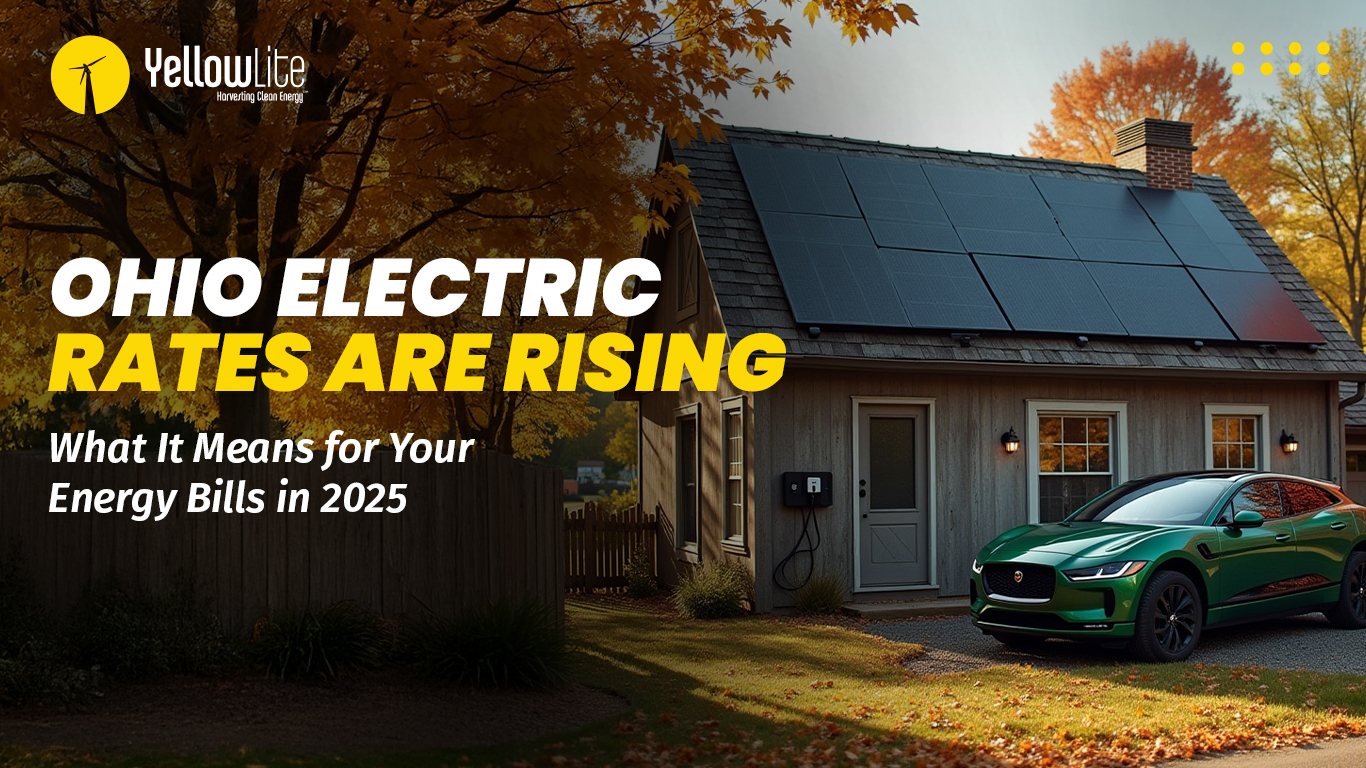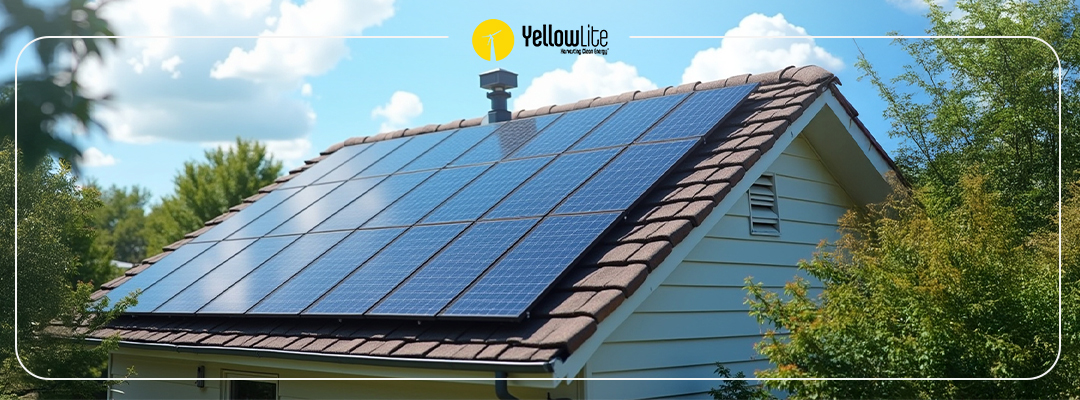As the global push for clean energy accelerates, solar renewable energy projects have become essential in reducing carbon emissions and meeting growing electricity demands. Among large-scale solutions, solar panel farms and wind farms have emerged as two of the most viable options.
Both offer a sustainable alternative to fossil fuels by harnessing natural resources for electricity generation. However, when comparing reliability, environmental impact, scalability, and cost-efficiency, solar panel farms often emerge as the preferred choice for utility-scale energy projects.
What Are Solar Panel Farms and Wind Farms?
A solar panel farm is a large-scale installation of photovoltaic (PV) panels designed to capture sunlight and convert it into electricity. These systems are commonly used for feeding power directly into the grid or powering communities and industries.
Key Features of Solar Panel Farms:
- Convert sunlight into electricity using photovoltaic cells.
- Power homes, businesses, and entire regions.
- Ideal for areas with abundant sunlight and open space.
YellowLite Expertise: YellowLite specializes in installing efficient solar panel farms, ensuring optimized performance with high-quality solar technology and professional system design.
Wind farms consist of multiple wind turbines that generate electricity by converting kinetic wind energy into mechanical power. The spinning turbine blades drive a generator, producing electricity suitable for grid distribution.
Key Features of Wind Farms:
- Convert kinetic wind energy into electricity.
- Best suited for areas with steady, high wind speeds.
- Often installed in rural or offshore locations with vast open spaces.
Efficiency and Energy Output: Which Performs Better?
Efficiency and output consistency determine how effectively a renewable energy project can meet power demands over time.
Solar Panel Farms:
- Consistent energy production, particularly in sunny climates.
- Modern panels offer efficiency rates of 15-25%, with premium models exceeding 25%.
- Can still generate electricity during cloudy days, though at reduced capacity.
Wind Farms:
- Heavily dependent on wind speeds, leading to variable energy output.
- Average efficiency is between 25% and 30%, but wind conditions can drop output to zero during calm periods.
YellowLite Insight: By partnering with YellowLite, you can maximize your solar power generation through expert design, panel orientation, and technology selection.
Land and Space Requirements: Which Is More Land-Efficient?
Land usage plays a significant role when planning large-scale renewable energy projects.
Solar Panel Farms:
- Require approximately 5-10 acres per megawatt (MW) of energy produced.
- Can be installed on versatile terrains, including rooftops, deserts, and degraded land.
- Ideal for agrivoltaics, where crops can be grown beneath elevated panels.
Wind Farms:
- Require significantly more space, averaging 50-85 acres per MW due to the need for spacing between turbines.
- The land between turbines can be used for agriculture but may not be fully optimized due to spacing constraints.
Environmental Impact: Which Has a Smaller Carbon Footprint?
While both contribute positively to reducing carbon emissions, they differ in terms of local ecosystem impact.
Solar Panel Farms:
- Operate with zero emissions during energy generation.
- Silent operation with minimal disruption to local wildlife.
- Some environmental impact during manufacturing, though recycling initiatives are improving.
Wind Farms:
- Wind turbines can impact bird and bat populations due to blade collisions.
- Noise pollution from rotating turbines may affect nearby residents.
- Visual disruption on landscapes can lead to public opposition in residential areas.
YellowLite’s Approach: YellowLite emphasizes responsible project planning, ensuring solar panels are installed in a way that minimally disrupts the local environment while maximizing clean energy output.
Maintenance and Longevity: Which Requires Less Upkeep?
Long-term operational costs and system durability are critical when investing in large-scale renewable energy.
Solar Panel Farms:
- Require minimal maintenance as they have no moving parts.
- Only occasional cleaning and inspections needed for peak performance.
- Panels typically last 25-30 years with gradual efficiency reduction.
Wind Farms:
- Wind turbines consist of moving parts like rotors and gearboxes, leading to frequent wear and tear.
- Require regular inspections and part replacements.
- Lifespan averages 20-25 years, often requiring significant component maintenance.
YellowLite Expertise: YellowLite provides long-term support including expert installation and performance monitoring to ensure lasting results.
Scalability and Cost-Effectiveness: Which is Easier to Expand?
Scalability and cost considerations directly impact the feasibility of expanding a renewable energy project.
Solar Panel Farms:
- Easily scalable by adding additional panels without major infrastructure changes.
- Decreasing costs due to advancements in PV manufacturing.
- Eligible for incentives, including the 30% Federal Solar Investment Tax Credit (ITC).
Wind Farms:
- More complex to scale due to turbine spacing requirements.
- Higher upfront costs and ongoing maintenance.
- Fewer financial incentives compared to solar panels.
Weather Dependence and Reliability: Which Offers Consistent Energy?
A renewable energy project must deliver reliable power throughout the year, regardless of weather conditions.
Solar Panel Farms:
- Dependable in regions with regular sunlight.
- Can still generate power during cloudy conditions, though with slightly reduced efficiency.
- Often paired with solar battery storage for continuous power supply.
Wind Farms:
- Energy production heavily depends on wind patterns, which can fluctuate significantly.
- Inconsistent wind speeds may lead to downtime or reduced output.
- Limited compatibility with battery storage systems compared to solar.
YellowLite Insight: YellowLite offers advanced battery storage solutions ensuring reliable energy output even during non-peak hours.
Why Solar Panel Farms Are the Better Choice for Large-Scale Renewable Energy
While both systems play crucial roles in reducing carbon emissions and advancing renewable energy, solar panels offer greater advantages in:
- Consistent Energy Production: Solar offers steady, reliable power generation, even during cloudy days.
- Lower Maintenance Requirements: Minimal upkeep compared to mechanical wind turbines.
- Reduced Environmental Impact: Quieter operation with minimal wildlife disruption.
- Land Efficiency: Better land optimization, especially with agrivoltaic applications.
- Cost-Effectiveness: Lower installation and maintenance costs, with significant financial incentives.
Take the Next Step with YellowLite
If you're considering solar panels for your renewable energy project, YellowLite is your trusted partner for design, installation, and long-term support. With our expertise in solar renewable energy, we ensure optimized system design, efficient installations, and access to solar incentives for maximum return on investment.
📞 Contact YellowLite today to explore how solar panels can revolutionize your clean energy efforts! 🌿
✅ Overall Winner: Solar Panels offer efficiency, cost-effectiveness, and long-term sustainability.
📞 Ready to switch to solar?
Contact YellowLite today to learn how a solar panels can effectively power your sustainable future! 🌞
Frequently Asked Questions (FAQs)
1. What is a solar panel farm?
A solar panel farm is a large-scale installation of solar panels designed to capture sunlight and convert it into electricity. These farms are often used for utility-scale solar renewable energy generation, supplying power to the grid or directly to large communities and businesses.
2. Are solar panel farms more efficient than wind farms?
While both are effective renewable energy solutions, solar panel farms often provide more consistent energy generation since sunlight patterns are more predictable than wind speeds. They also perform better in diverse weather conditions, making them ideal for steady solar renewable energy production.
4. What are the benefits of solar panel farms over wind farms?
Solar panels offer several advantages over wind farms:
- ✅ Consistent Energy Generation: Reliable power even during partly cloudy weather.
- ✅ Lower Maintenance: Fewer moving parts result in reduced wear and tear.
- ✅ Less Land Usage: More power can be generated per acre compared to wind farms.
- ✅ Minimal Environmental Impact: No noise pollution or risk to wildlife.
- ✅ Cost-Effective: Lower installation and maintenance costs, with federal tax incentives available.
5. Can solar panels be used for agricultural purposes?
Yes! They can be combined with agricultural activities in a practice known as agrivoltaics. By placing solar panels at elevated heights, crops can be grown underneath, allowing farmers to benefit from both food production and solar renewable energy generation.
6. How much land is required for a solar panel farm?
A standard solar panel farm requires approximately 5-10 acres per megawatt (MW) of energy generated. The land requirement varies based on panel efficiency and installation design. Compared to wind farms, solar panels require less space for the same energy output.
7. What is the lifespan of solar panels?
Most solar panels have a lifespan of 25-30 years. High-quality panels, like those installed by YellowLite, maintain efficiency with minimal degradation over time, ensuring reliable solar renewable energy production for decades.
8. Are solar panel farms suitable for all climates?
Yes, they can operate effectively in most climates. While they perform best in areas with abundant sunlight, modern PV technology allows solar panels to generate electricity even during cloudy weather, making solar renewable energy viable across diverse regions.
9. What incentives are available for solar panel farms?
Solar panels can benefit from multiple incentives, such as:
- 30% Federal Investment Tax Credit (ITC)
- State and local rebates
- Sales tax exemptions
- Net metering policies that allow selling excess energy back to the grid
YellowLite helps clients access these incentives to make transitioning to solar renewable energy more affordable.
10. How can YellowLite help with solar panel farm installations?
YellowLite specializes in the design, installation, and planning of solar panels. Our services include:
- Custom system designs tailored to your energy needs.
- Access to premium solar panels for maximum efficiency.
- Ongoing maintenance and support.
- Guidance on federal and state incentives for solar energy savings.



